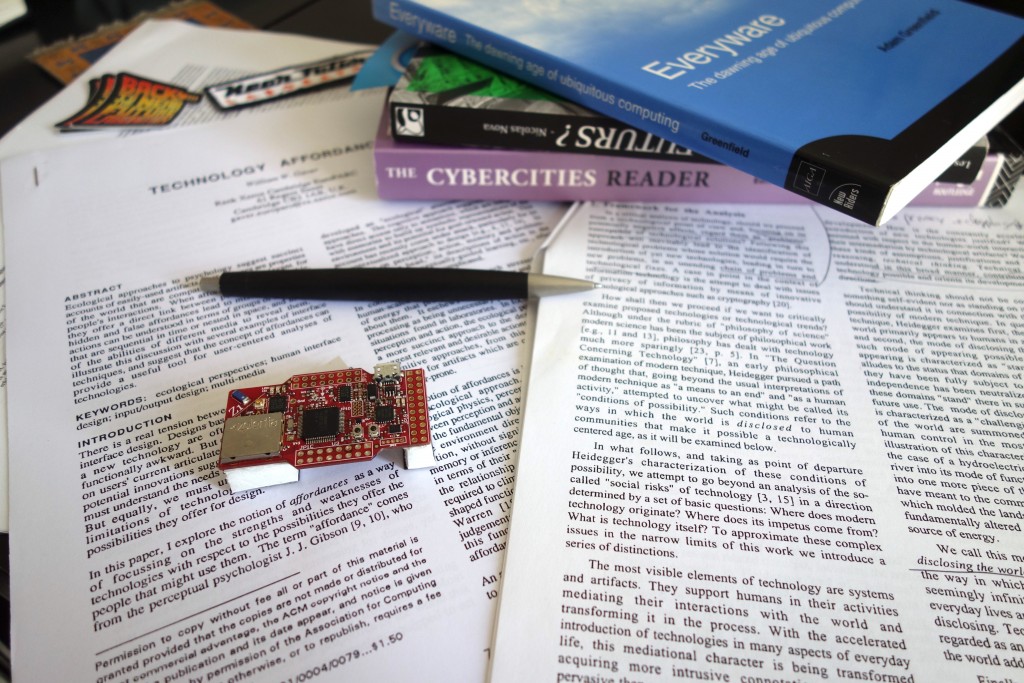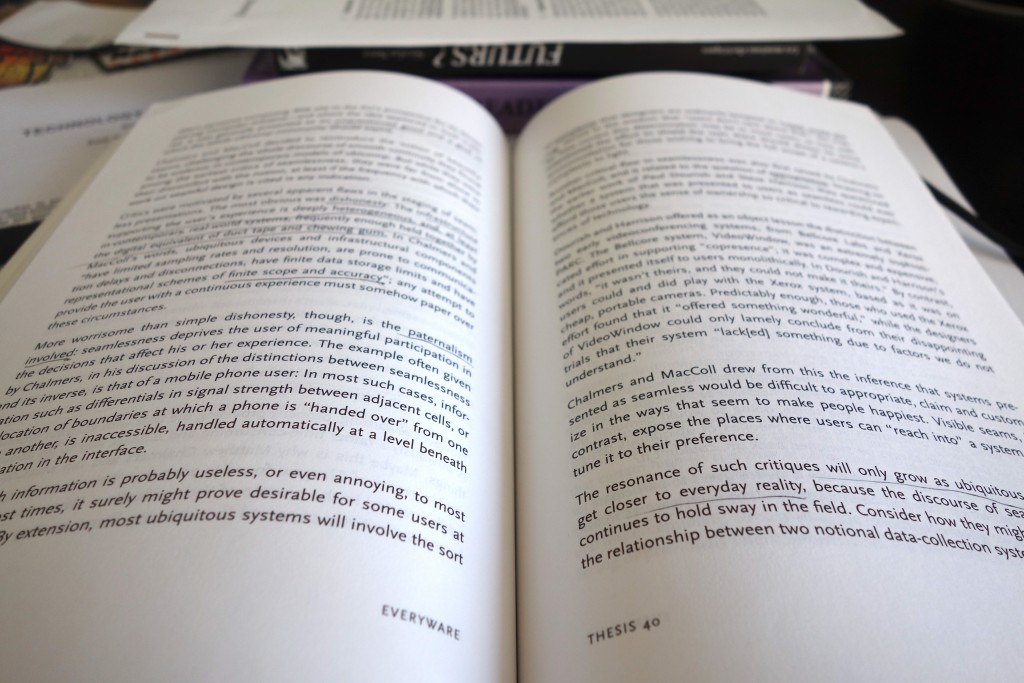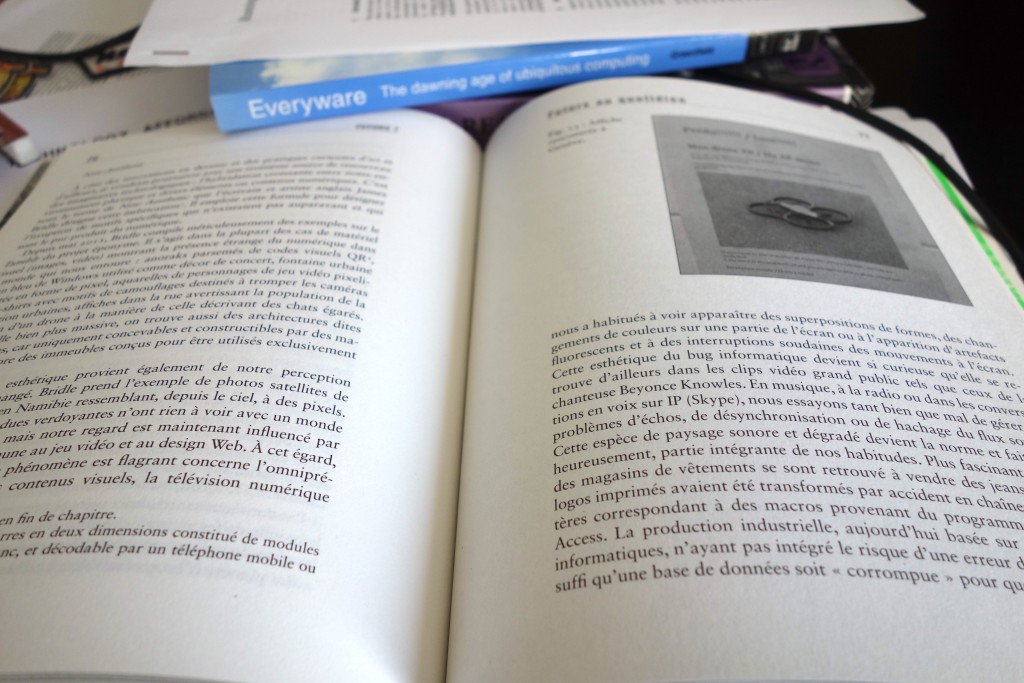It has never been so easy to build things and throw them into people’s pockets, bags, phones, homes, cars. Almost inevitably — with this abundance of ‘solutions’ — it has never been so easy to get caught in the hyperbolic discourses of perpetual technological disruptions with their visions of flawless connectivity and seamless experiences. When translated literally, theses visions often take the form of a questionable world of Internet of Things (IoT).
At Near Future Laboratory, we get the chance to meet amazing people active in the IoT who request critique and feedback on their products. We help them abstract from the hype of the dominant vision and gain fringe insights that can refresh their strategies. To do so, I often dig into the rich literature produced in the early days of ubiquitous computing. Some of the texts were published more than 10 years old, but — trust me — they all carry inspiring thoughts to improve the contemporary and near future connected worlds.
I hope this accessible academic literature is useful for people active in IoT curious to enrich their ethical, human, geographic and social perspectives on technologies. En route and beware of shortcuts!
The shift from the showcase of the potential of technologies to the showcase of active engagement of people
Written in 1995, Questioning Ubiquitous Computing critiqued that research in ubiquitous computing is conceived as being primarily as the best possibility for “achieving the real potential of information technology” and had little to do with human needs and much more with the unfolding of technology per se.
Ten years after, based on similar observations, but with more constructive arguments, Adam Greenfield wrote Everyware to question the implications of the scale up of ubiquitous computing and genuinely how to improve the connected world he coined as “everyware” [my notes].
In the same period voices raised to rephrase the approach of ubiquitous computing. For instance, in Moving on from Weiser’s vision of calm computing: engaging ubicomp experiences Yvonne Rodgers promotes connected technologies designed not to do things for people but to engage them more actively in what they currently do [my notes].
The shift from the design of a perfect future to the design for the messiness of everyday life
Similarly, in Yesterday’s Tomorrows: Notes on Ubiquitous Computing’s Dominant Vision Genevieve Bell and Paul Dourish highlight that the problems of ubiquitous computing are framed as implementation issues that are, essentially, someone else’s problem, to be cleaned up as part of the broad march of technology. In other words, the dominant vision of ubiquitous computing promotes an indefinitely postponed future in which someone else will take care of solving any technological (e.g. interoperability, fluctuant connectivity, or limited battery life) or social issues. Consequently, the text argues for a “ubicomp of the present” which takes the messiness of everyday life as a central theme [my notes].
That notion of messiness of technological settings provoked the interests of researchers to regard technological imperfections as an opportunity for the design of everyday life technologies. William Gaver pioneered work in that domain with his proposals of Ambiguity as a Resource for Design that requires people to participate in making meaning of a system [my notes] and Technology Affordances that promotes interfaces disclosing the direct link between perception and action. Practically, as advocated by Matthew Chalmers in Seamful interweaving: heterogeneity in the theory and design of interactive systems, this means that people accommodate and take advantage of technological imperfections or seams, in and through the process of interaction. In No to NoUI, Timo Arnall gives excellent additional arguments that question the tempting approach of “invisible design”.
Observing the dynamic relationship of technology, space and humans to demystify the perfect technology
In her PhD dissertation A Brief History of the Future of Urban Computing and Locative Media Anne Galloway shows that ubiquitous technologies reshape people experiences of spatiality, temporality and embodiment in the networked city. Her contribution augments an extensive literature that investigates how technologies are not the sole drivers of urban change and how they co-evolve with the urban fabric as they become woven into the social, economic and political life of cities. Code/Space is a seminal book by Rob Kitchin and Martin Dodge that precisely discuss software from a spatial perspective, analyzing the dynamic relationship of software and space. The production of space, they argue, is increasingly dependent on code, and code is written to produce space [my notes]. In that machine readable space bugs, glitches and crashes are widely accepted imperfections as the routine part of the convenience of computers [my notes]. Also, ubiquitous computing helps remake urban spaces through new formed strategies of security. For instance some chapters of the book Cybercities Reader talk about the emerging militarized control society encouraged by the dream of the perfect technology and the myth of the perfect power [my notes].
Precisely with the objective of moving beyond these dreams that foster indefinitely postponed futures, Nicolas Nova wrote Futurs? La panne des imaginaires technologiques that explores alternative ways to imagine and design future objects and experiences including Design Fiction.
I took many shortcuts to put together these heterogeneous publications but I hope that some of them can help you better question the dominant visions of the IoT and enrich your approach to improve any of the technologies that are constantly getting closer to people, their homes, streets and clothes (e.g. AI, Big Data, etc).


